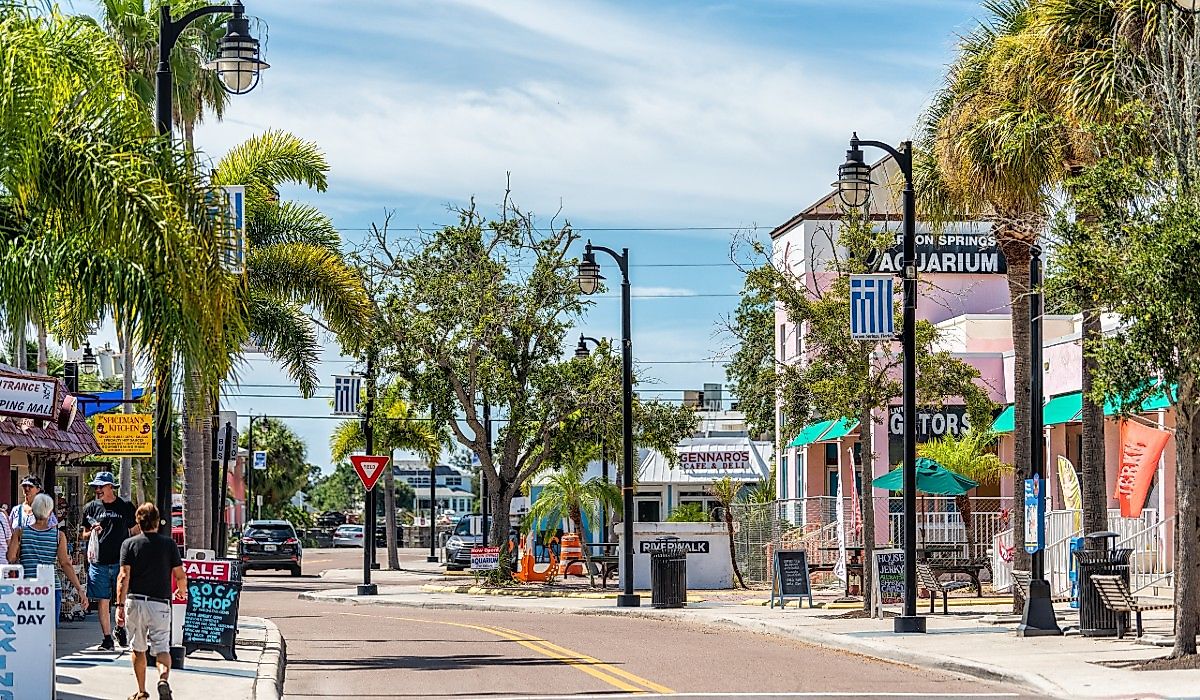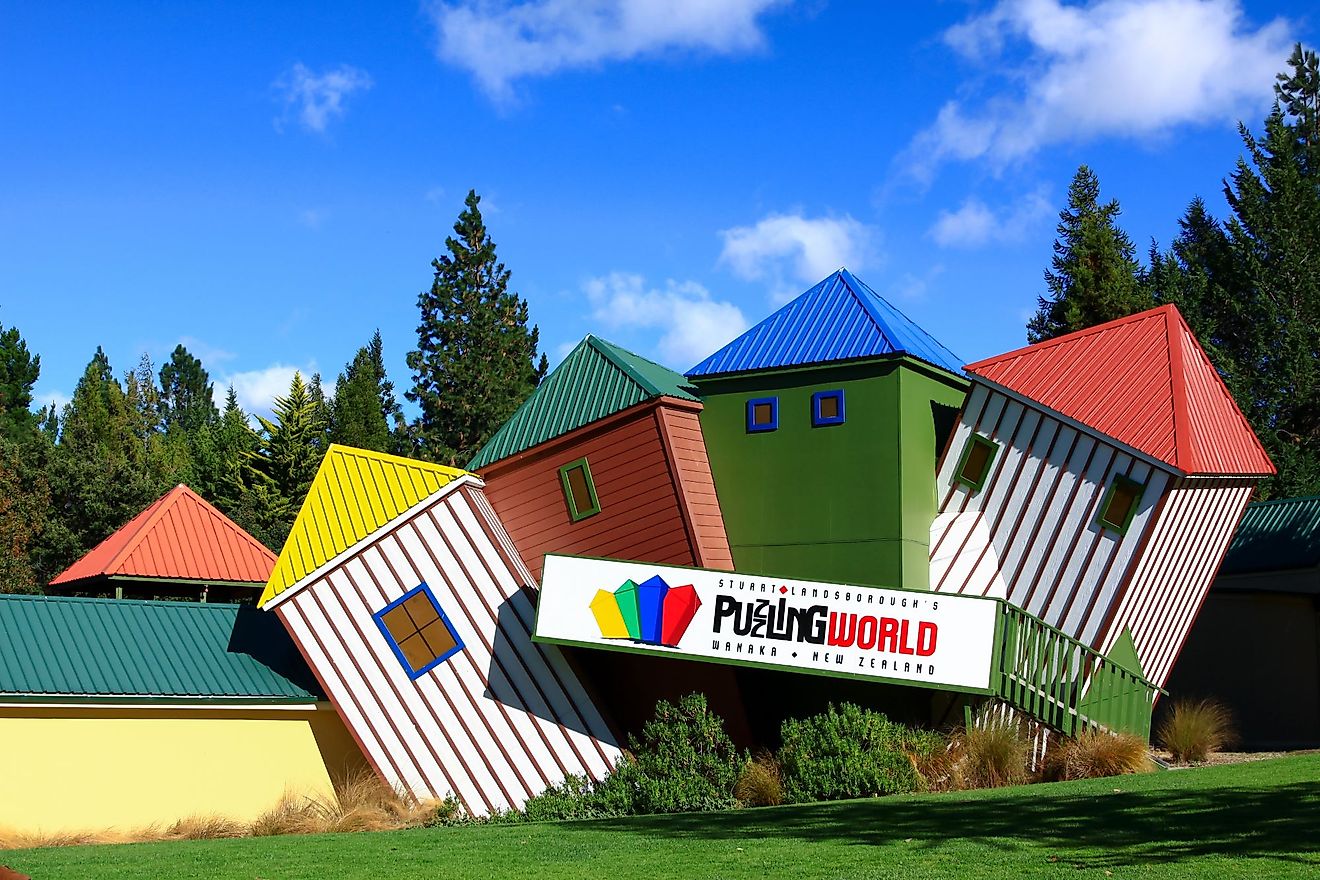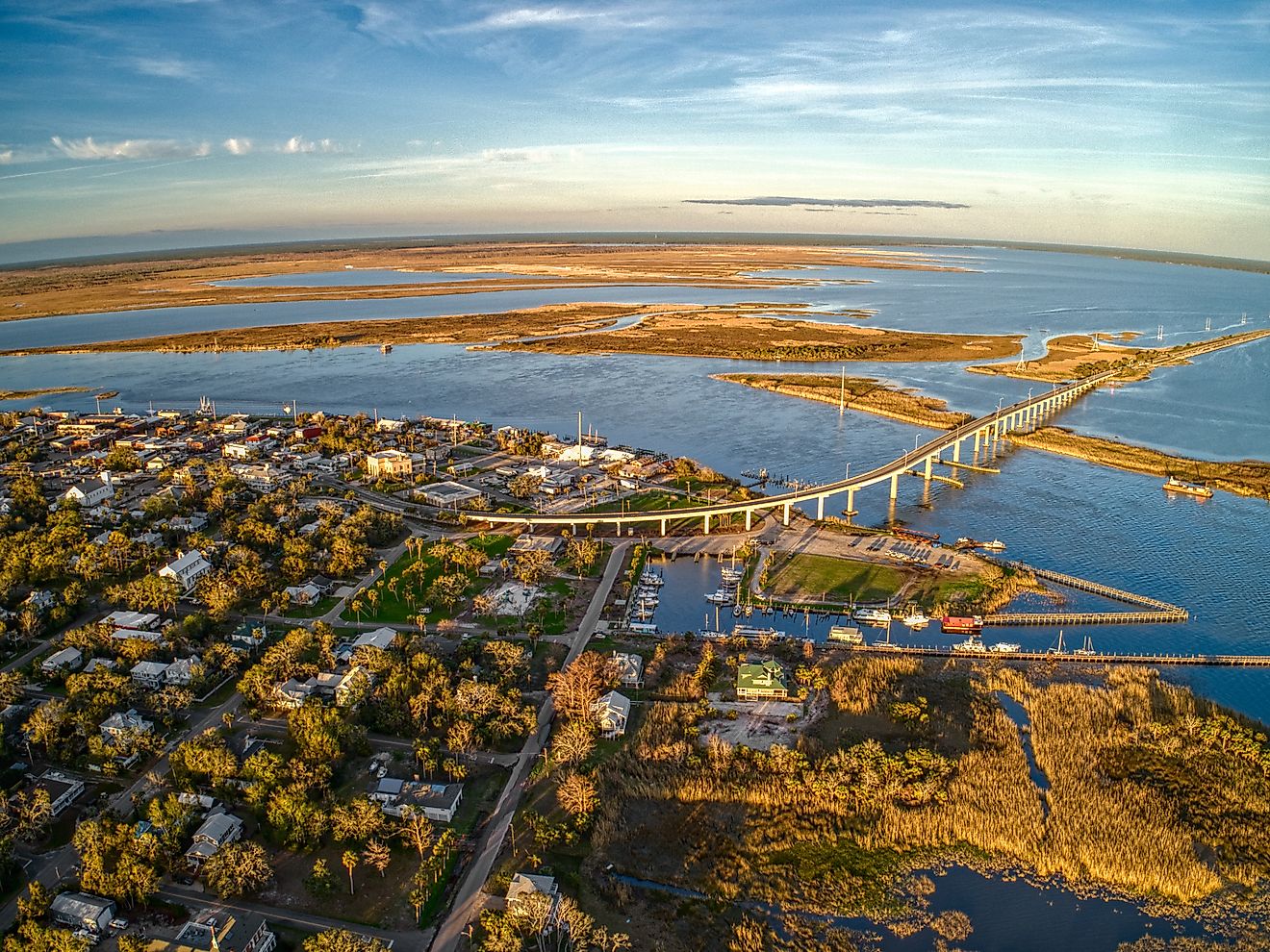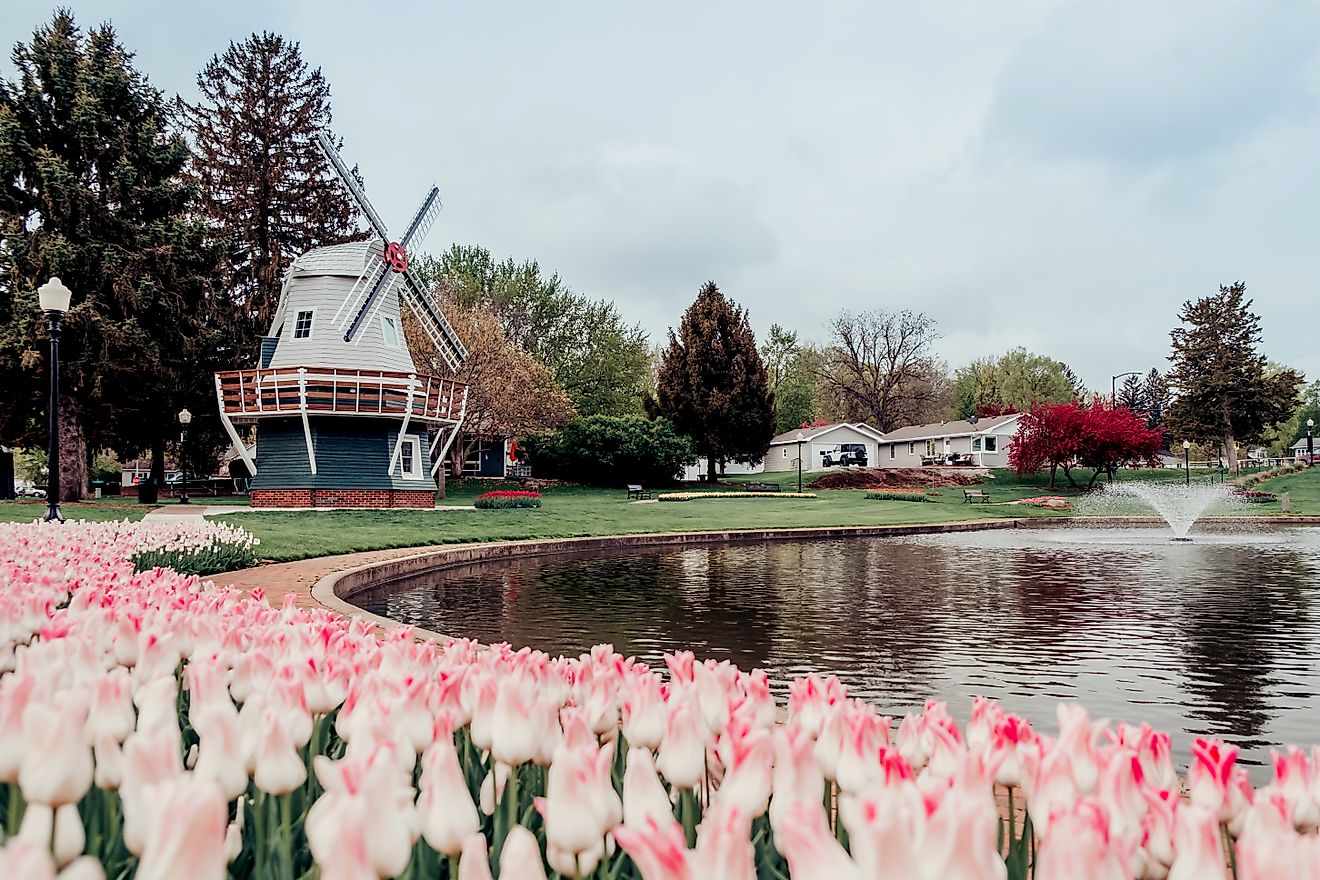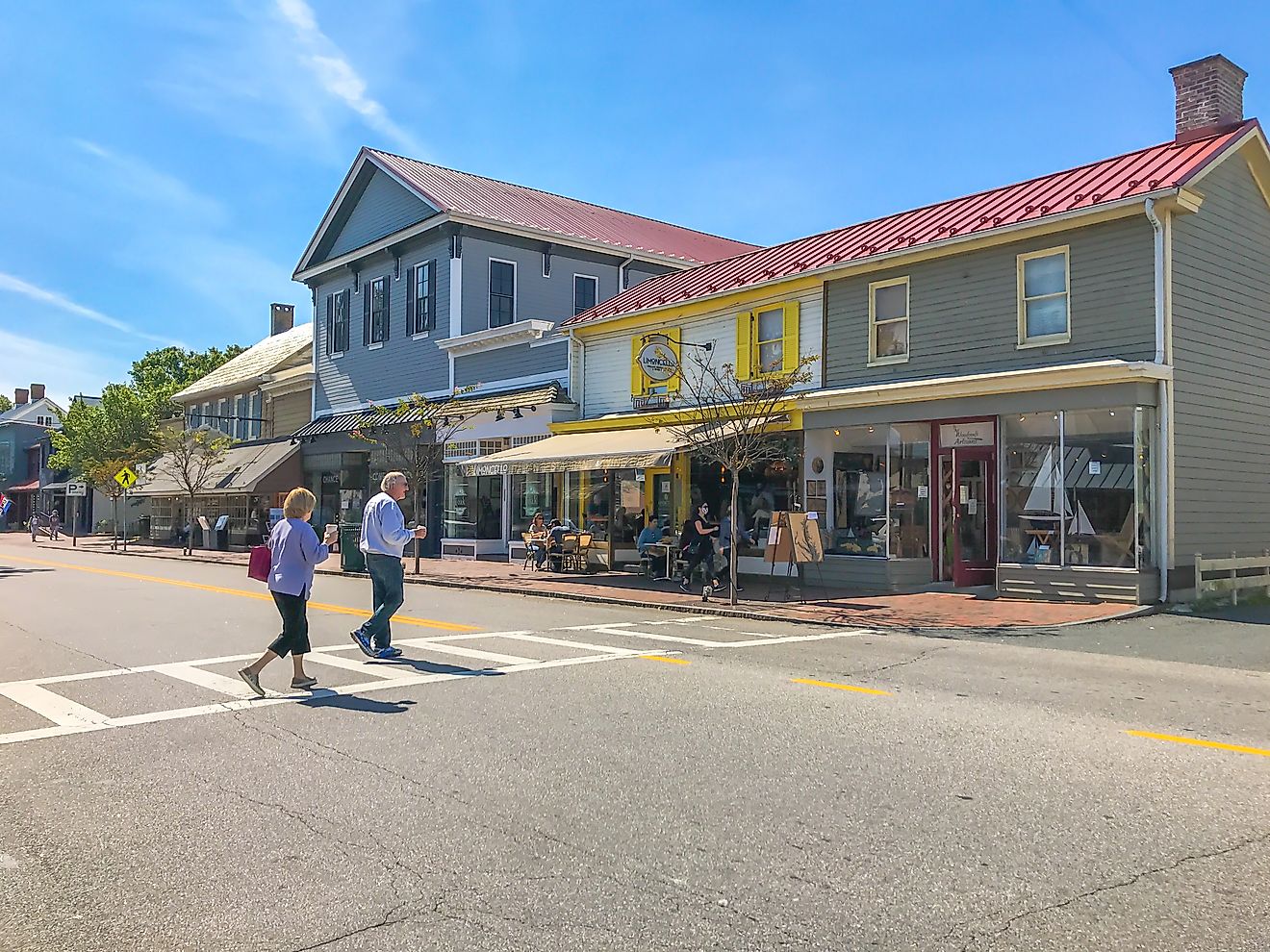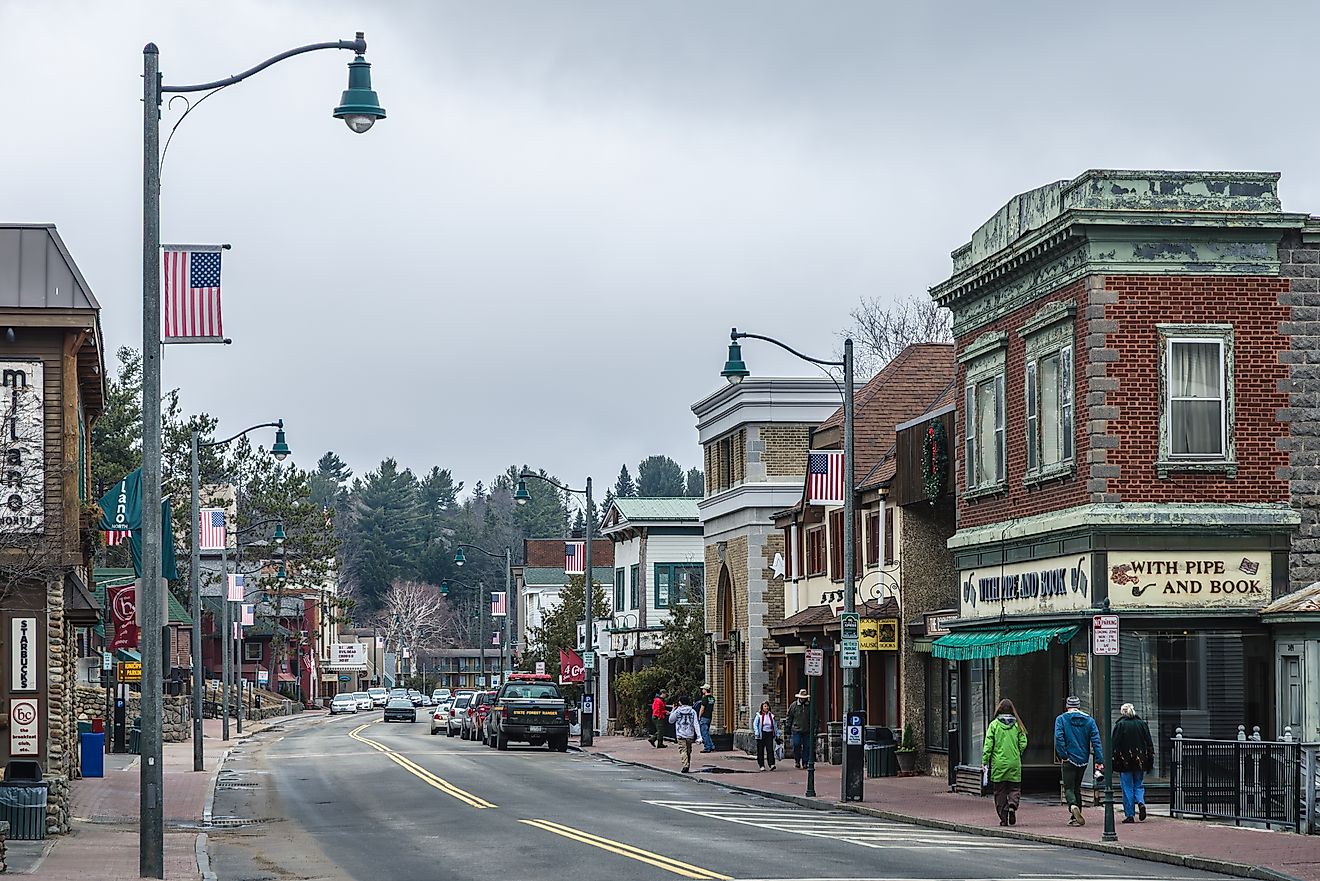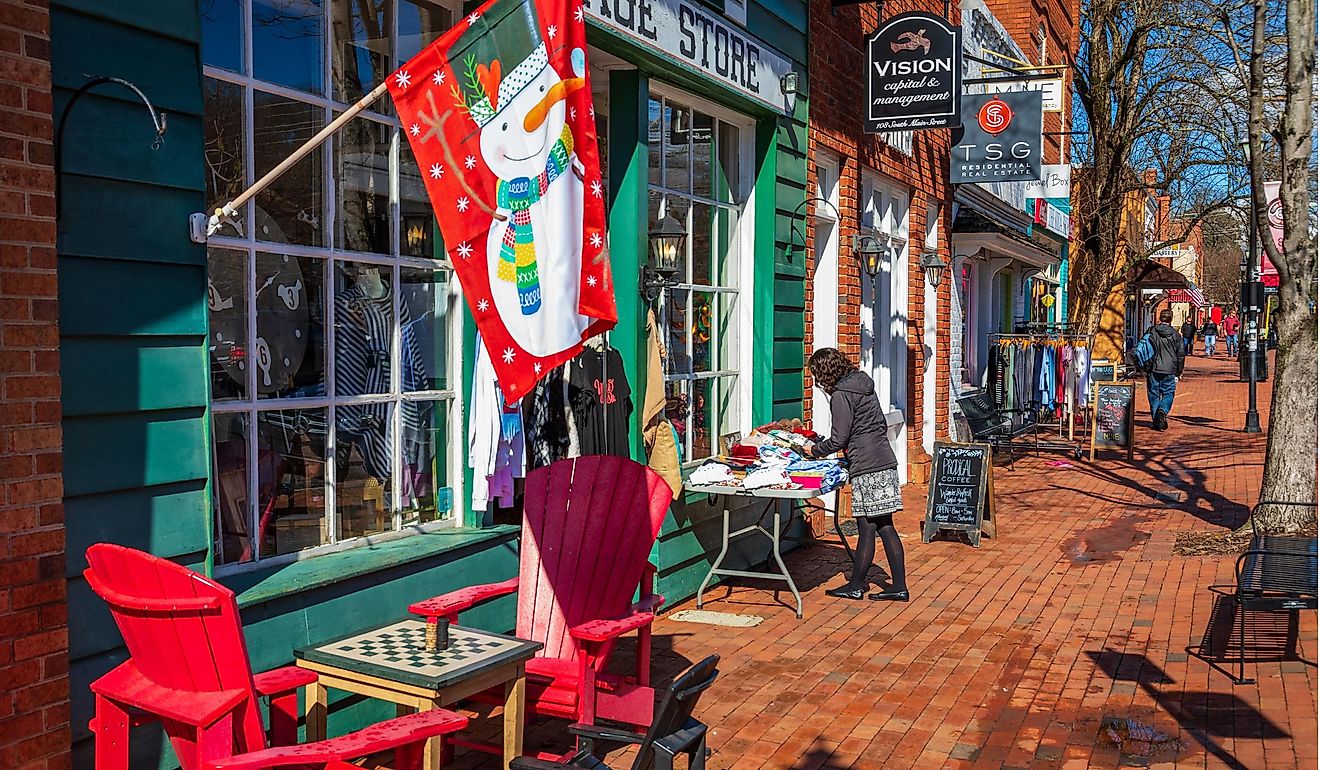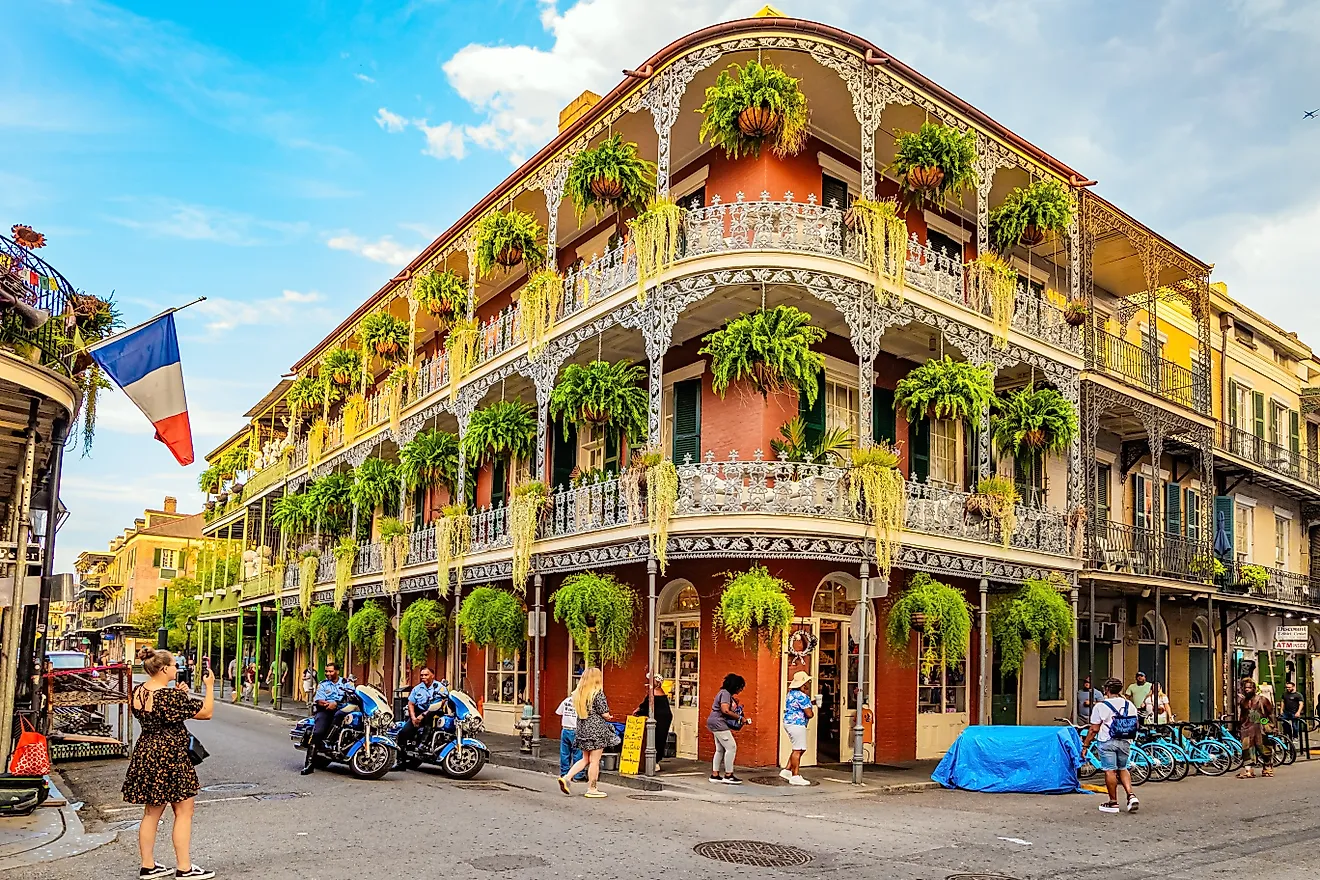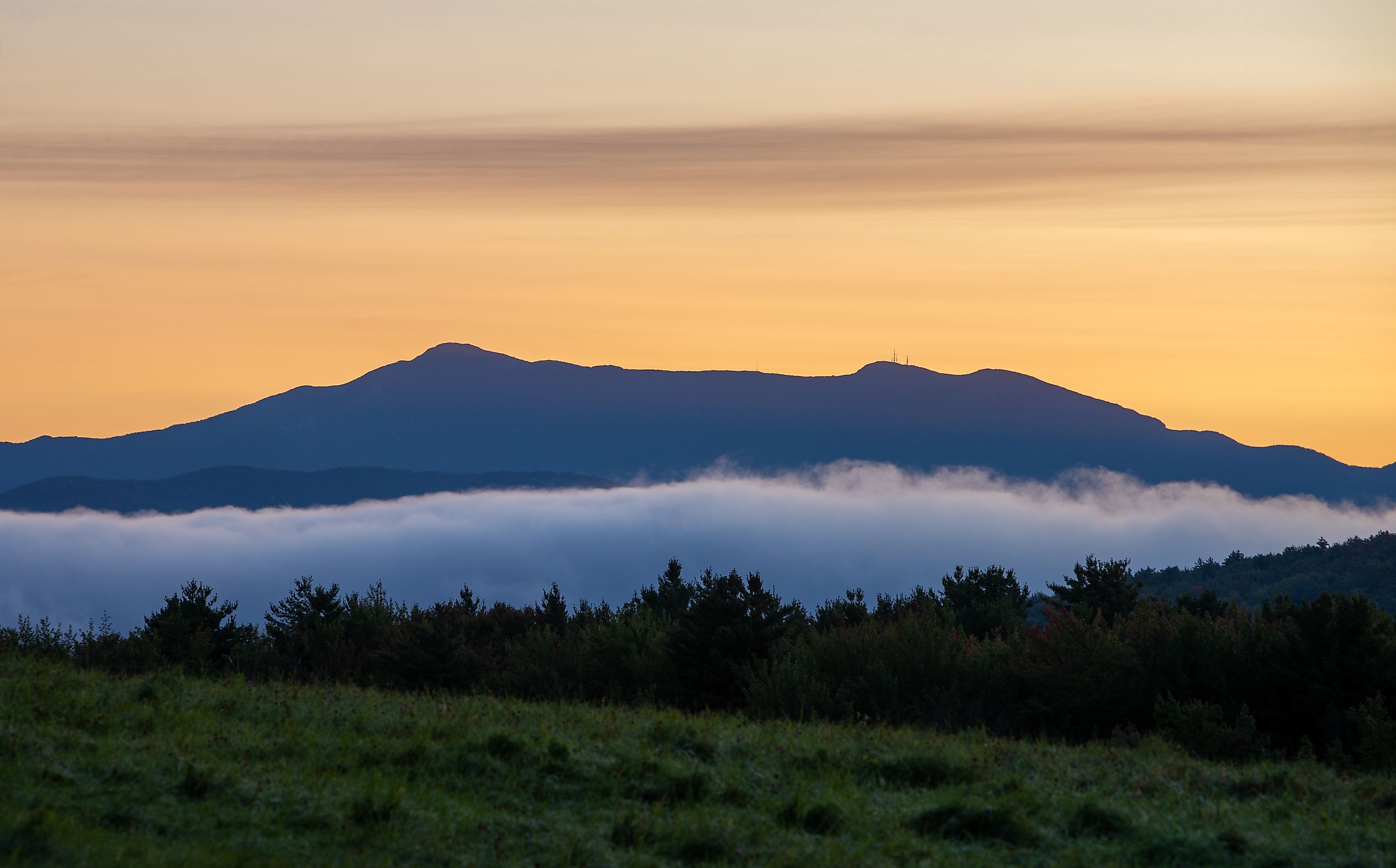
2025's 8 Most Scenic Vermont Towns
While Vermont is the only New England state without direct access to the Atlantic Ocean, its broad lakes and snowy heights more than compensate. Lake Champlain cascades wide across the northwest, while the Appalachian Mountains’ subranges carve through the countryside region with forested slopes and white peaks. Throughout this inland terrain, many towns continue to lift both residents’ and visitors’ spirits with crisp breezes and glimpses that hold the gaze longer than expected.
From islands like Grand Isle to villages like Lyndonville, these places feature an abundance of slow, meandering trails that wind through thick vegetation and along calm shores. Benches where weary nature lovers can pause and recuperate amid the blooms stand beside bursts of colorful tropical sprays. From the distant Adirondack foothills that lend a sense of elevation to Grand Isle’s great lake to its open meadows and forest edges, Vermont’s nature quietly redefines scenic aroma away from jostling urban metropolises. In 2025, these small towns in the Great Mountain State are worth every mile.
Colchester
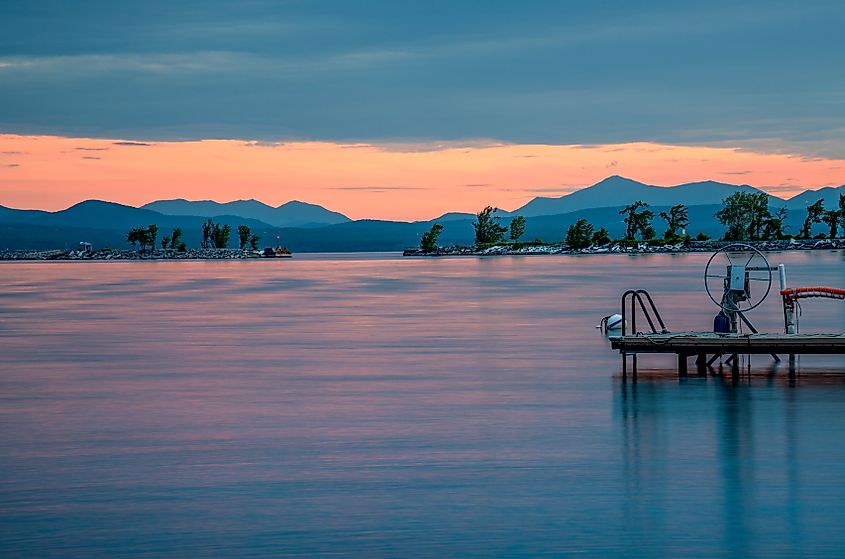
Colchester is part of the Burlington metropolitan area, giving it a bridge between natural splendor and city access. The town is bordered to the north and south by the mouths of the Lamoille and Winooski Rivers, respectively, as they empty into Lake Champlain, the former near the sweeping shores of Milton’s Sandbar National Wildlife Management Area. Multiple beaches and parks dot the shoreline for miles, providing a mesmerizing balance of sun-warmed sand and Champlain’s refreshing breezes.
Colchester’s ecosystem unravels in its forests and protected lands. Niquette Bay State Park brims with dense trails winding through maple, hemlock, and cedar stands. The region includes a majestic 250‑year‑old red oak, in addition to a 127-foot eastern cottonwood which is recognized on Vermont’s Big Tree List as the state's tallest. Marinas dot Malletts Bay, where lake-wide panoramas and recreational spots host calm evenings and lively weekend picnics. Campsites along the bay’s edge reward those enchanted by the water’s hush, lapping steadily beneath dusk’s softening light.
Underhill
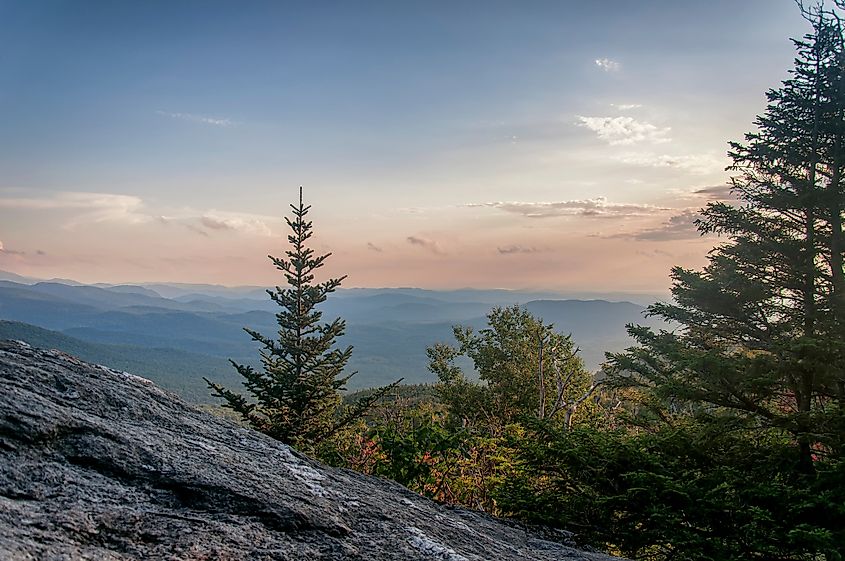
The elevations of Vermont’s Green Mountains define the terrain around Underhill, where ski zones on Stowe Mountain and the towering summit of Mount Mansfield dominate the region. With its peak approaching nearly 4,400 feet, Mansfield lies within the town’s bounds, along with its adjoining state forest and Underhill State Park, which span everything from stone-built fireplaces to deep-set caves. The vegetation here bears signs of ancient endurance, with the elusive presence of alpine tundra patches and vulnerable flora that have persisted through several ice ages.
The Long Trail climbs Mount Mansfield from its lower points at the Winooski River, rising steadily with views reaching Camel’s Hump, the next tallest peak farther south. Along Sunset Ridge Trail, Cantilever Rock juts defiantly from the slope, a gravity-defying slab that punctuates the area’s dramatic stone outcroppings. Southward, the mountain range cascades uninterrupted through Bolton Valley, with Richmond and the town of Waterbury resting not far from the ridgelines.
Brighton
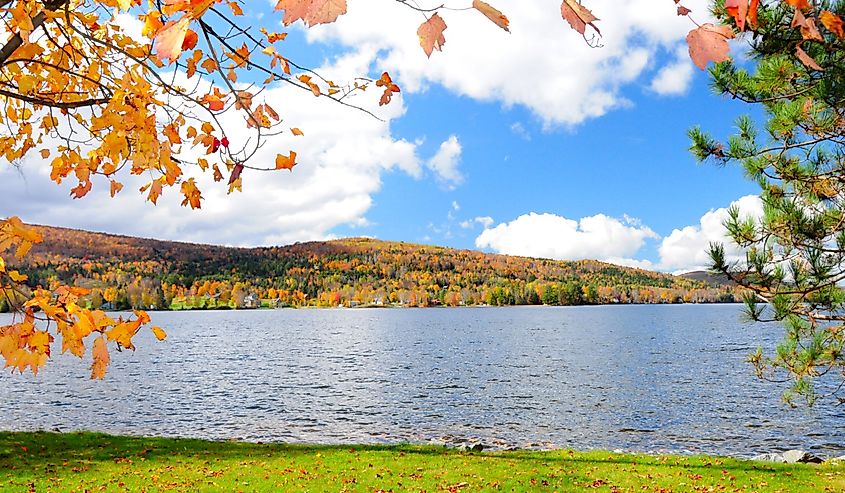
East of Vermont’s mountainous terrains, Brighton rises amid water-rich and forested slopes. Island Pond forms the village’s center, a glacial lake whose calm surface reflects a world of firs and ridges. Spectacle Pond, another kettle-formed basin, contributes to the layered wetlands and surrounding woodlands. Brighton State Park features trails and clearings surrounded by towering red pine trees, including one that reaches 103 feet and ranks among the tallest of its kind in Vermont. The area extends into the Silvio O. Conte National Fish and Wildlife Refuge, where boardwalks and lookout platforms unveil broad views across Lewis Pond’s mosaic of water and forest.
The Nulhegan River Trail charts snowshoeing paths through lowland woods, while the North Branch leads into elevated ski routes that wind beneath high canopy and open sky. Wildlife flourishes throughout the basin, with moose, lynx, and boreal birds populating the preserve from underbrush to treetop.
Derby
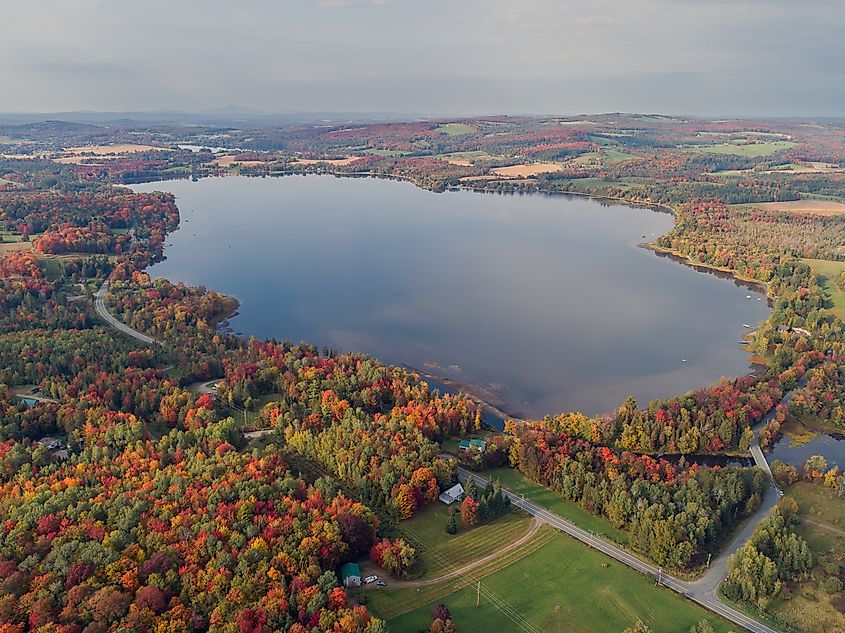
Lake Salem in Derby, VT.
Just steps from the Canadian border, Derby draws energy from its link to Lake Memphremagog and neighboring wetlands. To the north, Eagle Point Wildlife Management Area provides shared vistas with lush forests and quiet marshland. In town, Derby settles amid a trio of lakes, Clyde Pond, Lake Salem, and the namesake Lake Derby, where the green meadows stretch between bodies of water. Petsafe Kingdom Dog Park dedicates some of that meadow for pups to roam freely and enjoy long summers.
Countryside unfolds around the trails that follow the shores of Memphremagog and its tributaries, shaping easy loops through spruce and maple. Clearing off the main trail, the lakeside retreats of Lindsay Beach are soothing and rewarding. Kayak launch spots pepper the shoreline, and visitors often pause at picnic tables shaded by pines. Derby’s mix of water, woods, and open space makes it a peaceful stop in Vermont’s Northeast Kingdom to walk, paddle, or simply sit by the edge of a quiet pond.
Grand Isle
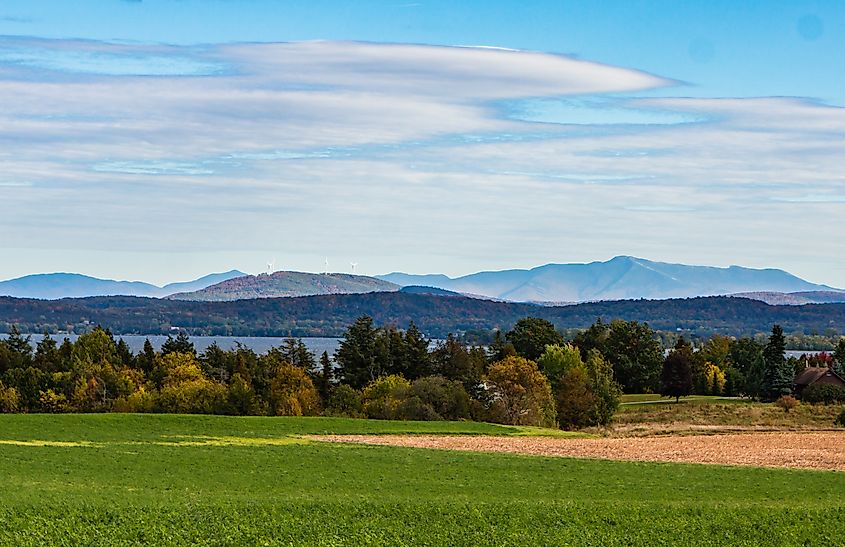
Grand Isle lies within Lake Champlain’s wide expanse, one of Vermont’s northernmost island towns floating quietly below the Canadian border. Ferries from Gordon Landing follow the Cumberland Head route across the lake to Plattsburgh, New York, where the Adirondack foothills rise faintly in the distance. Often referred to as the Sixth Great Lake, Champlain supports recreation year-round, with whitewater kayaking and canoeing available during the warmer seasons. As winter tightens its grip, its surface freezes over and draws ice fishermen almost immediately.
On neighboring North Hero Island, Knight Point State Park curves along the shoreline, with sand beaches and cabin and trailer sites that stay in demand through summer and fall. Grand Isle’s connection runs not only to those who reach it by ferry but to animals as well, with Breakaway Farm maintaining horse stables and green carpeting as far as the eye can see. Toward the east, the Grand Isle State Park Nature Center overlooks Keeler Bay, rounding out the island’s calm but ever-inviting terrain. The park features hundreds of tent and RV campsites and is a year-round magnet for wildlife watching, water sports, and cross-country skiing.
Shoreham
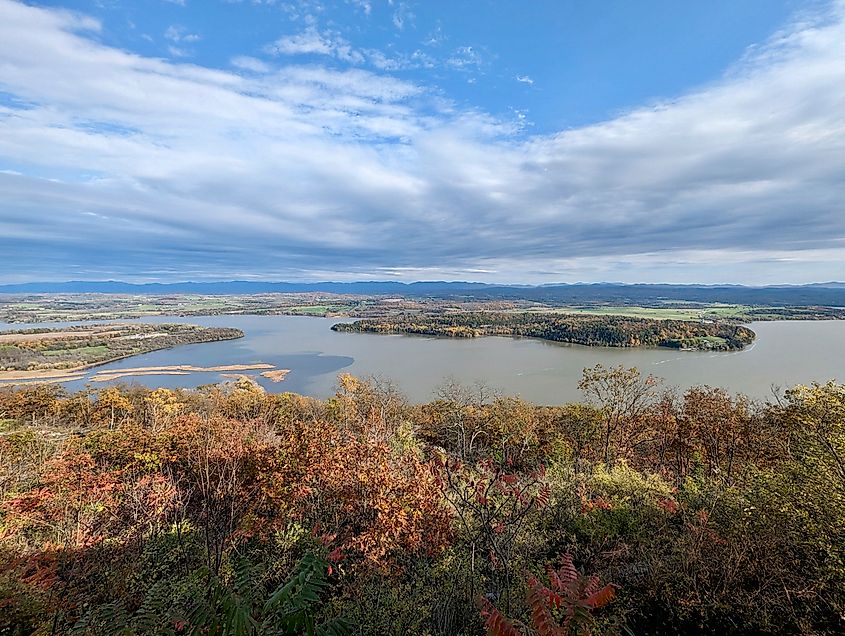
Shoreham spreads along Lake Champlain’s southeastern shores, where morning light glimmers over gentle waves. Rolling farmland meets hardwood groves, with the Adirondack range framing distant views. On clear days, Mount Independence and Mount Defiance rise across the water, as they separate Lake Champlain from Lake George. Hiking paths lead into Mount Independence State Historic Site, where melancholic Revolutionary War ruins stand open to the sky. Shoreham’s waterfront parks welcome ospreys in flight and reflect the lake in scenes that feel both tranquil and sublime.
To the southeast, the East Shoreham Covered Railroad Bridge spans the Lemon Fair River, combining historical value with visual allure. The river and nearby springs support vegetation that attracts largemouth bass, panfish, and catfish near Richville Wildlife Management Area. Further north, the Lemon Fair Wildlife Management Area, with its diverse array of wetlands, grasslands, and forests, safeguards the Eastern meadowlark. Nearby, the Lemon Fair Sculpture Park places more than 25 outdoor sculptures, many life-size, amid Shoreham’s peaceful countryside.
Killington
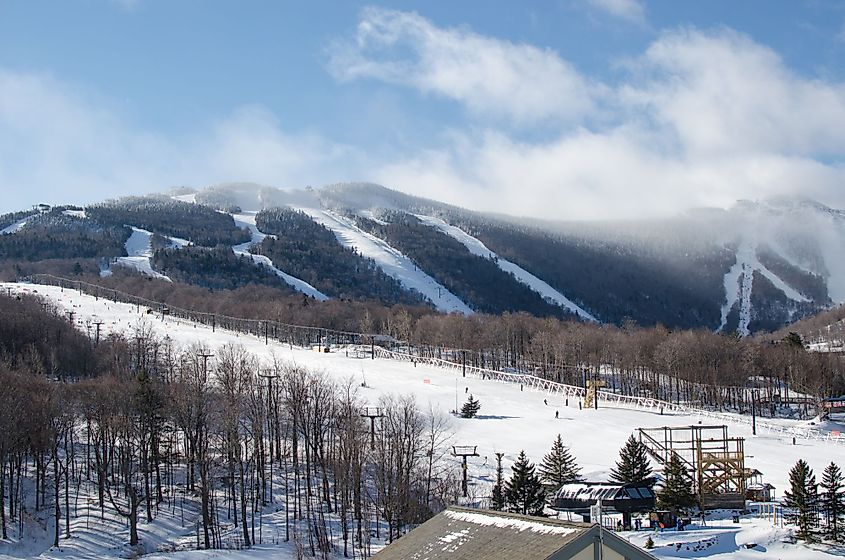
Killington crowns Vermont's spine, perched at the state's midpoint and reflecting its complete array of mountain temperaments. Occupying the northern edge of the Coolidge State Forest with its secluded lean-tos, backcountry camping, and gold-panning opportunities, Killington's terrain proves ideal for snowmobiling and winter pursuits. Nearby, Chittenden Reservoir's sweeping vistas, especially during autumn's color display, captivate visitors who utilize kayaking access and boat launches to deepen their experience.
The Sherburne Pass rises between Deer Leap Mountain and Pico Peak. The Long Trail winds through town, following the Appalachian ridge with striking overlooks and clean mountain air. Highland forests shelter uncommon wildflowers and the gentle whisper of warm breezes.When winter returns, Killington's numerous ski areas generate infectious energy as runs welcome enthusiastic skiers below these summits. Yet the recreational activities merely serve as a medium to completely absorb this town's unfiltered beauty and Vermont's essence.
Lyndon
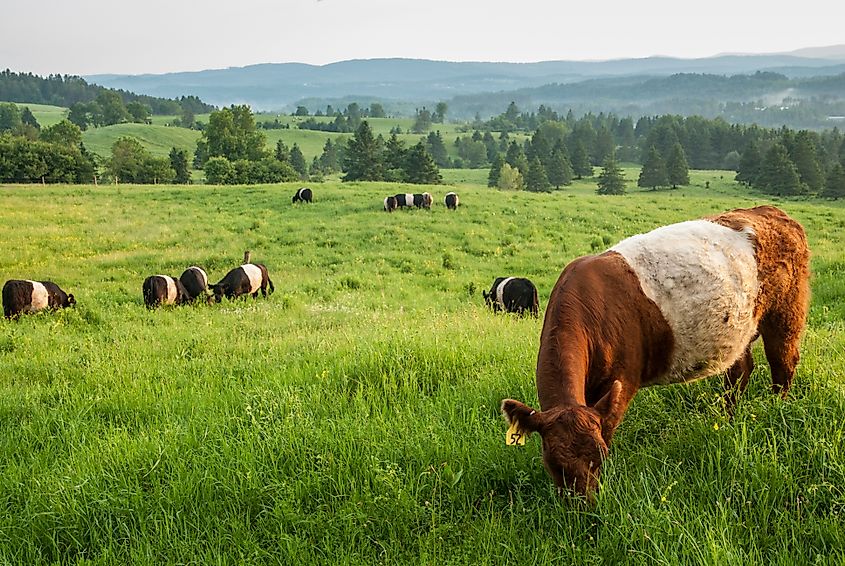
Lyndon gathers its beauty where the two forks of the Passumpsic River gently converge, forming a natural cradle for the village. At this meeting point stands the Miller’s Run Covered Bridge, a preserved piece of 19th-century craftsmanship whose wooden trusses and fading grandeur reflect the town’s pastoral spirit. Just beyond, the Florentine Boar Fountain, modeled after Tacca’s Renaissance bronze, glistens at the village center as an unexpectedly elegant embellishment that catches sunlight and passing glances in equal measure. In the north, crossing the river farther downstream, the Randall/Burrington Covered Bridge adds another wooden jewel to the village’s collection.
To the south, Lyndon State Forest’s trails twist adventurously through maple, spruce, and crabapple, where the canopy cascades down the ridge like autumn confetti. Its terrain tempts everyone from quiet explorers to energetic wanderers. At the aptly named Heaven’s Bench, the hillside carpets out in green like a prayer rug unfurled beneath the sky. In winter, Burke Mountain changes its rolling slopes into a soft white canvas for skiers lounging under heavy snow-laden branches.
Vermont Knows Where Stillness Lives
Though Vermont ranks among the snowiest U.S. states, especially across the Northern Kingdom, what distinguishes it is how naturally its seasons fall into rhythm. Its lifestyle and climate echo a subtle amalgam of nearby marvels. The alpine quiet of New York’s Adirondacks, the lake-born calm of Quebec’s Memphremagog, and the red pine groves known to New Hampshire and Massachusetts all find some reflection here. The Great Mountain State's scenic small towns preserve their soul with clarity; structures remain intact, trails appear eternal, and horses still cross meadows where traffic never intrudes. As the Connecticut River bends past the prettiest fields and hills without urgency, it mirrors the peaceful rhythm that makes Vermont so quietly beautiful.
